The In-Between: Suffering, Comfort, and JuYeon Kim
Each academic year, the Penny W. Stamps School of Art & Design welcomes a new artist/designer to the school community through the Roman J. Witt Artist in Residence program. Designed to foster the creation of new work, residents of this competitive program collaborate with students, faculty, staff, and members of the university community on a creative project throughout their residency.
During the 2018-2019 academic year, the school was proud to host national and international exhibiting artist JuYeon Kim as the Witt Artist in Residence. Leveraging the resources and community support of the Stamps School, Kim was able to delve deeply into a subject that has captivated her heart, mind, and creative impulses for a long time: the broad, multi-faceted concept of the “in-between.”
Kim’s fascination with this concept experienced a formative moment in college, when Kim survived a powerful life event that shaped the trajectory of her creative work. While finishing her MFA at the Tyler School of Art in Philadelphia, Kim received a call to say that her mother was nearing end of life. It was time to come home to Seoul to say goodbye. In the aftermath of this painful period, Kim felt both intense grief and a deep curiosity, a longing. “I wanted to solve the mystery of the soul’s place,” Kim said.
Referencing the idea of the bardo — the space between death and re-birth in Tibetan Buddhist practice — Kim said: “I wanted to sit in the place of the ‘in-between.’” To explore this concept further, Kim created an installation in Lacoste, France, utilizing a man-made cave built in the 11th century. “I covered the room with white paper flowers,” Kim said. “White is the color of funerals in Korea.”
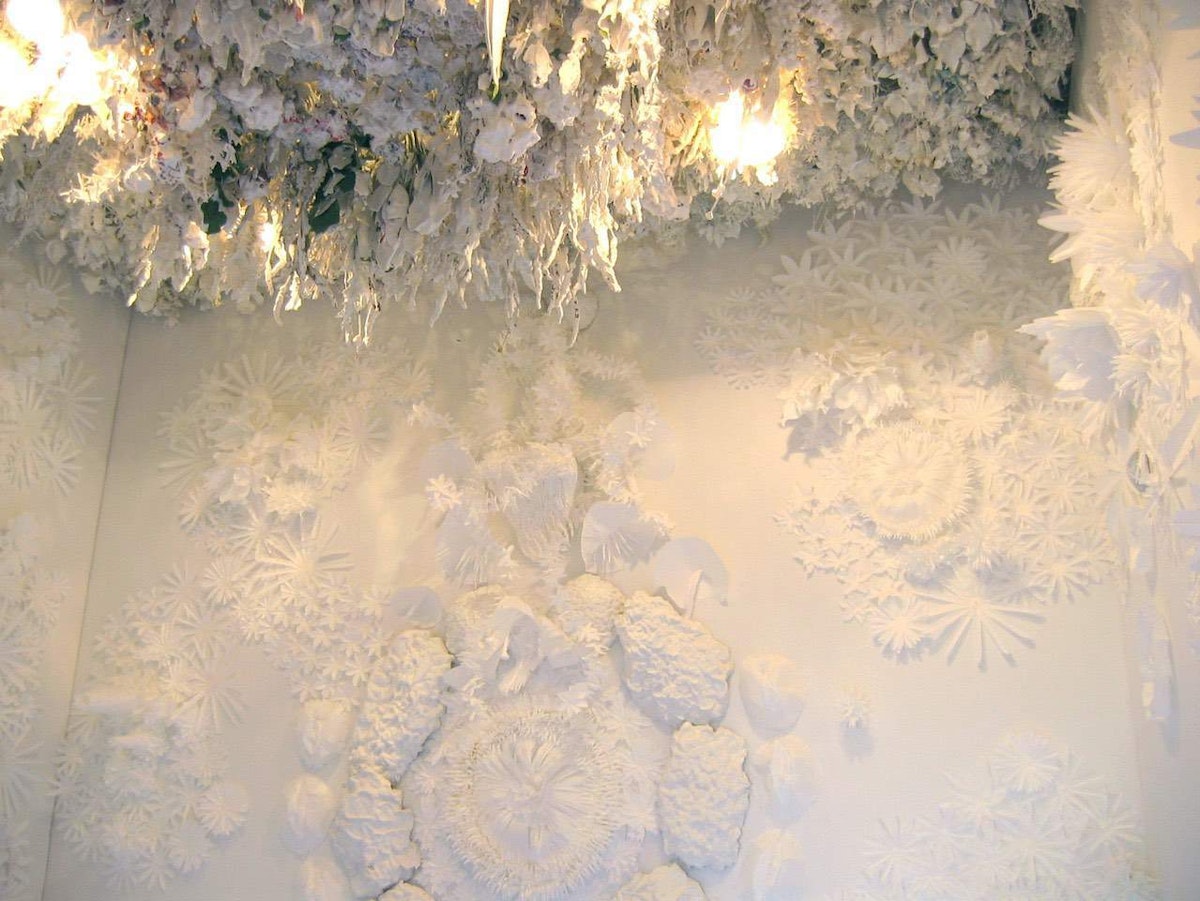
Fascinated by the dualities among Eastern and Western aesthetics and ideas, Kim noted that in America, white is the color of weddings and purity, while in Korea it is the color of death. “Butterflies hold the same significance,” she said. “The ‘in-between’ is more than a place for the soul, but a place for us to contemplate more broadly as it relates to our interpretations of the world.”
As her creative exploration of the concept of the “in-between” progressed, Kim found herself interested in the relationship between suffering and comfort. While studying acupuncture in Korea, Kim heard whispered acknowledgements of wianbu, or “comfort women” from some of her elderly patients. Forced into sex slavery by the Japanese military during World War II, the wianbu were nearly a forgotten thread of history. While it is estimated that over 200,000 Korean women fell prey to Japanese soldiers during this time, the few survivors of the trauma rarely returned to their home villages for fear of stigmatization and rejection—fewer still told their stories. Presently, there are approximately 24 known remaining survivors of the atrocities, all in their 80s and 90s.
“I knew that I needed to create a space to comfort the souls of the wianbu,” Kim said. “A space where we could acknowledge their suffering, honor them, and provide comfort to both the living and the dead.” A place to let go in order to move forward.

As part of her 2019 Roman J. Witt Residency at the Penny W. Stamps School of Art & Design at the University of Michigan, Kim created WiAn: White Garden With White Noise, an installation of meditative poetry, a soundscape by classical music composer George Tsontakis, and sculptural objects.
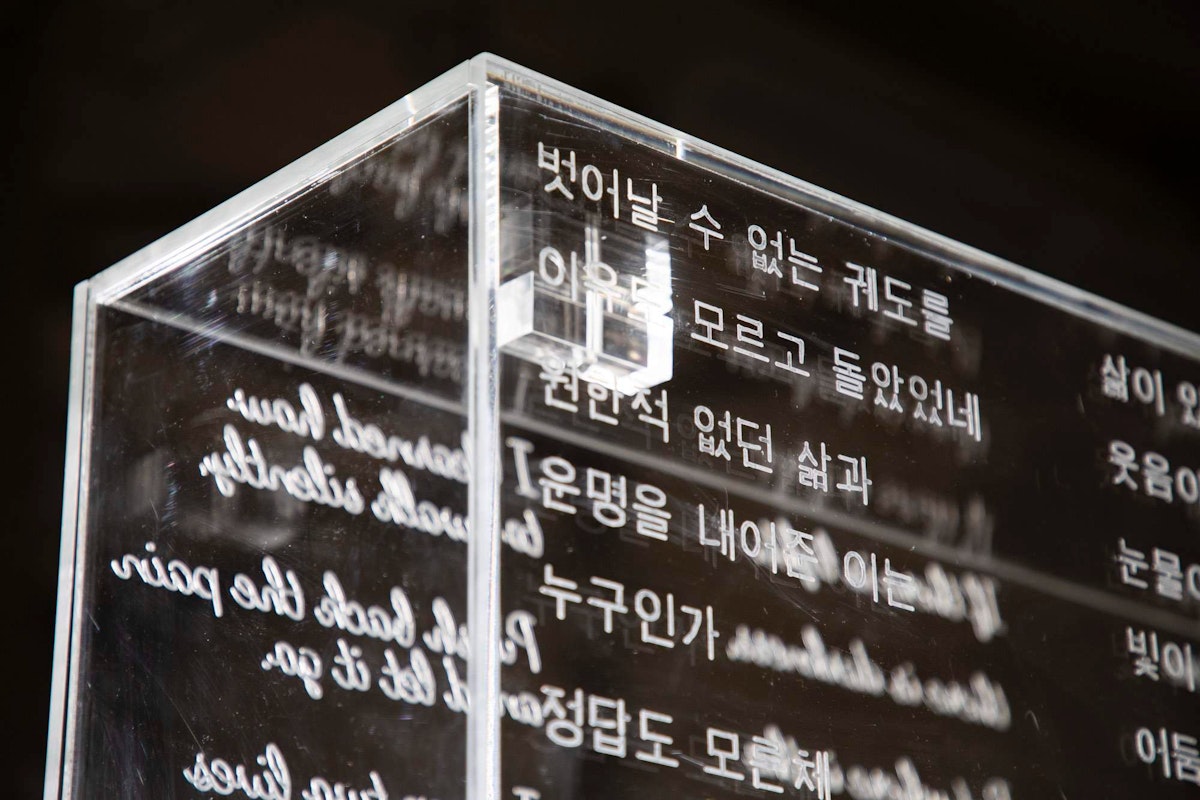
Visitors to the installation will encounter an ethereal white gardenscape of transparent and opaque fictitious flora, comprised of many different plant specimens. White, the traditional color for Korean funerals, returns the women to their rightful purity and innocence. At the center of the garden, two palanquins engraved with original poetry invite the souls of the wianbu to take rest from their arduous journey to be carried like royalty, to receive unequivocal compassion and kindness. A transparent door and trellis, also engraved with original poetry, invites souls to move lightly, unburdened, to the next chapter of being.

To create the poetry-engraved palanquins for the installation, Kim collaborated with Stamps Studio Coordinator Mike Vitale to pilot the use of castor acrylic (plexiglass) on the CNC router, which typically is used to engrave wood. After a lot of trial, error, and a month of 12-hour studio days, the pair developed a technique to create the textured transparency that Kim craved for the project.
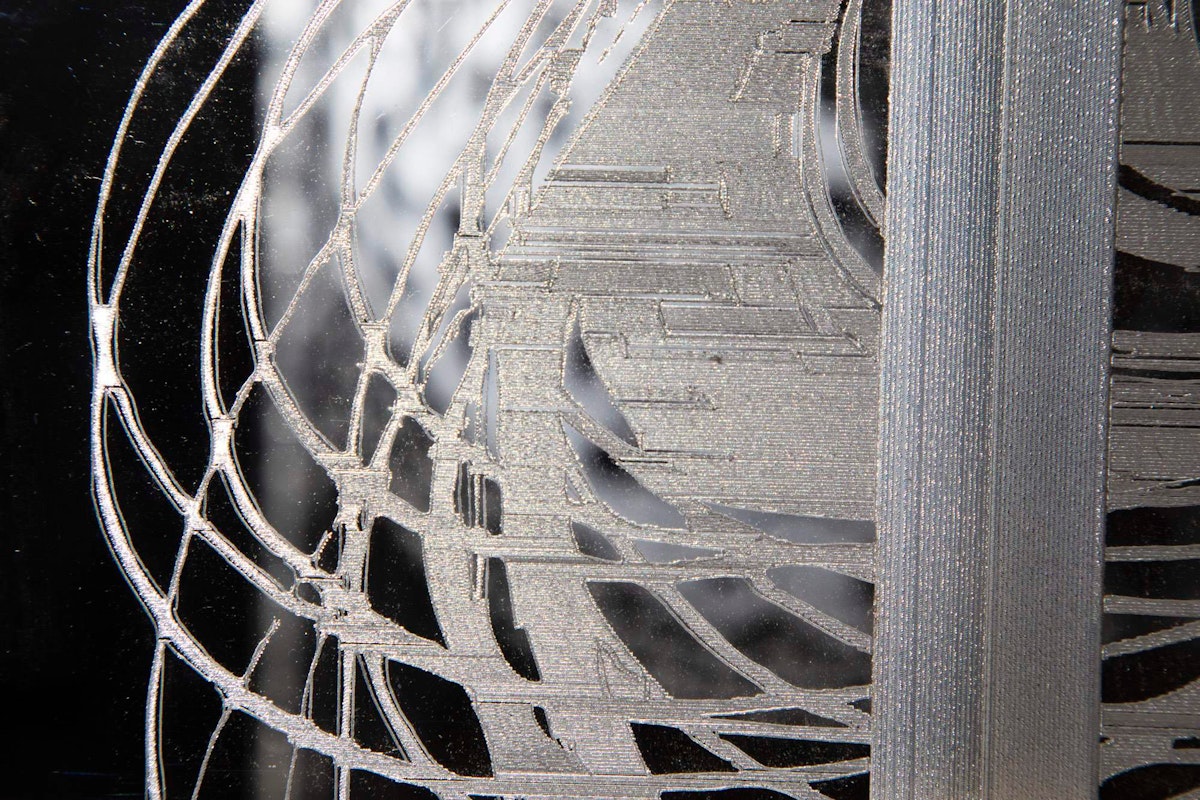
To create the “white garden” for the installation, Kim worked with five U-M students in the Ceramics Studio on sculpture, mold making, and assembly, with the support of Studio Coordinator John Leyland. Sara Kenward (Stamps BFA ‘22), Ariel Friedlander (Stamps BFA ‘22), Shannon Yeung (Stamps BFA, ‘21), Ellen Levy (Stamps BFA, ‘21), and Sarah Saks-Fithian (LSA), appreciated the unique experience provided by Kim’s 2019 residency.
“It was a wonderful experience collaborating with JuYeon,” said Sara Kenward (Stamps BFA ‘22). “I learned new techniques of creation, such as how to create molds and fill these molds with a two-part resin mixture. From this project, I learned the importance of patience, as well as commitment to helping JuYeon execute her ideal vision of the project.”
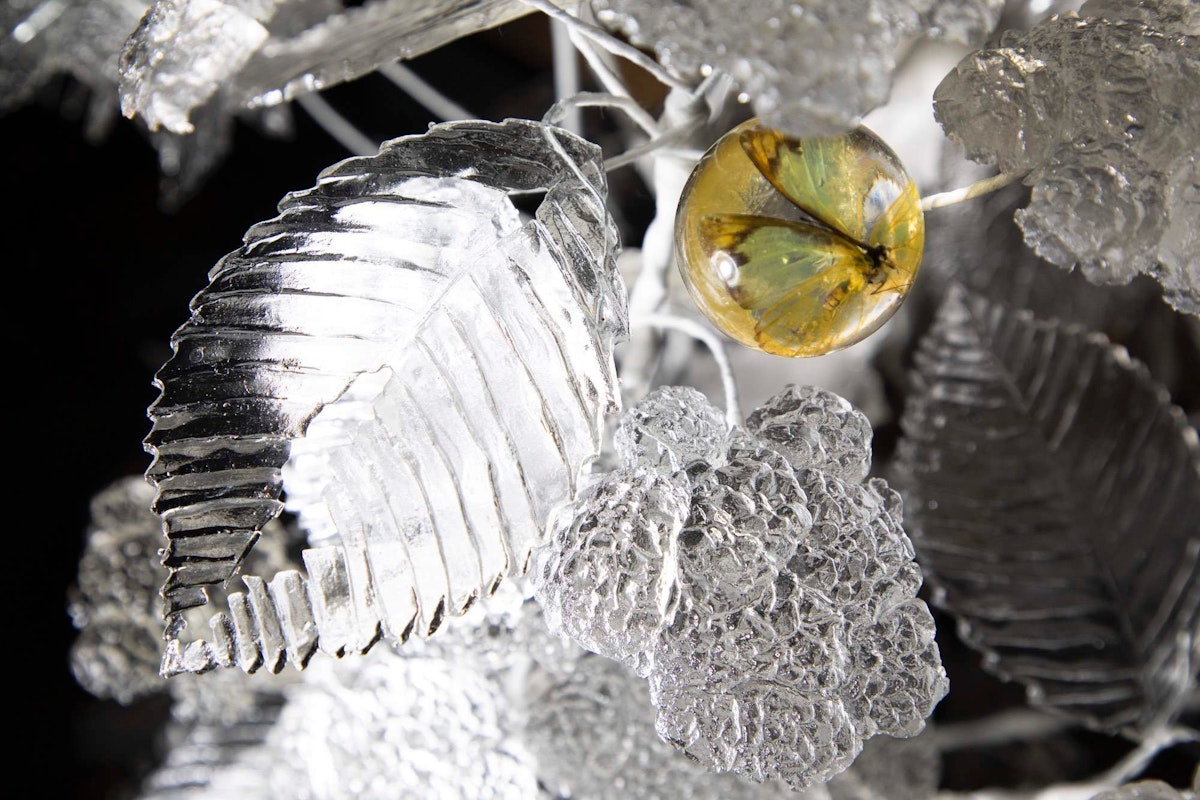
“The students here are so bright,” Kim said. “It was a joy to work with them.”
Additionally, the Nam Center for Korean Studies at the University of Michigan connected Kim with translator Soyeon Kim, who translated the installation’s poems from Korean to English. JuYeon also worked with Alexandra Westman, an architecture major to create a 3D blueprint of the palanquins to ensure exacting measurements, and Dylan Haugh-Ewald, an Engineering student who helped Kim pick up some Adobe Illustrator skills needed for the manufacturing designs.
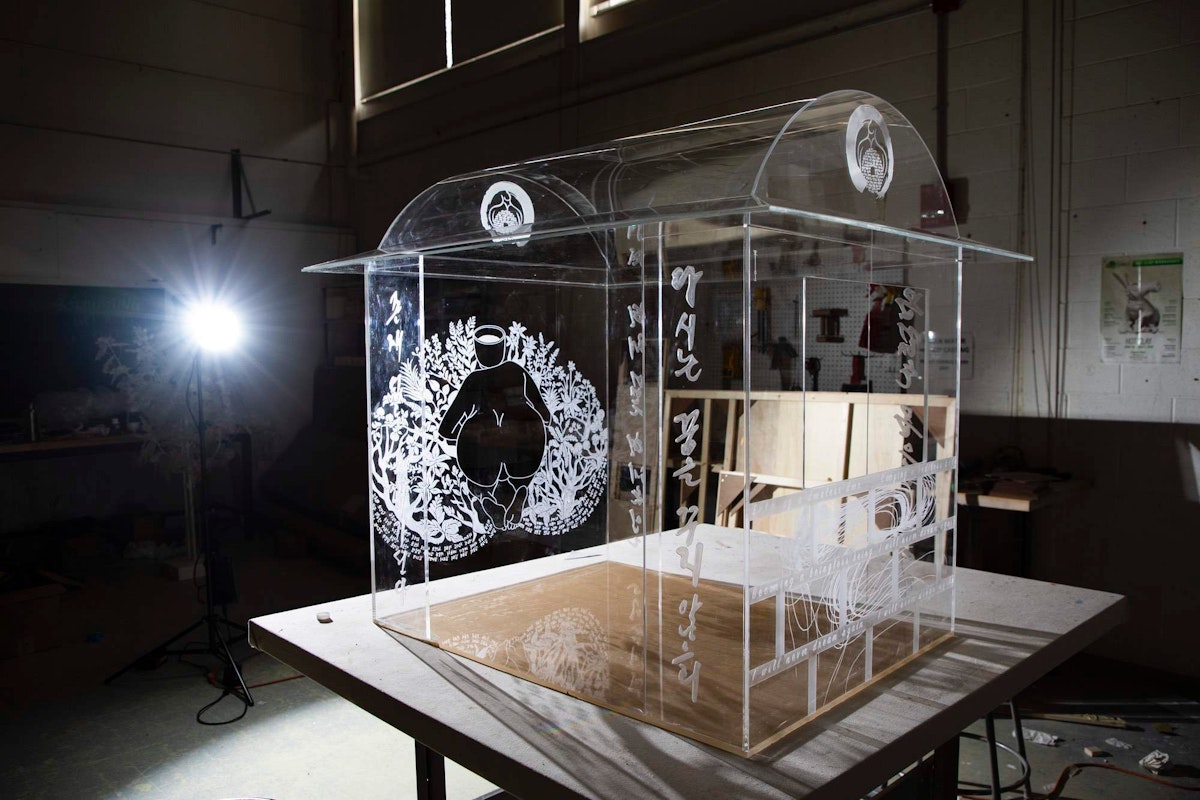
“When I have an idea of something I want to make, I know I’m going to encounter materials that I’m unfamiliar with,” Kim said. “I just stay true to the vision and find the help and collaborators that I need to make the work happen.”
Through the collaborations found in the Witt Artist in Residence program, Kim found new ways of exploring and expressing her driving inquiries, providing a space for recognition, comfort, strength, and contemplation. WiAn: White Garden With White Noise honors the lives of all who have suffered in a deeply personal ways, meeting them in the stillness of the “in-between.”
WiAn: White Garden With White Noise will be on view at the Center Galleries at the College for Creative Studies, Detroit October 5-November 2, 2019. There will be an opening night reception on Friday, October 4 from 6-8 pm.